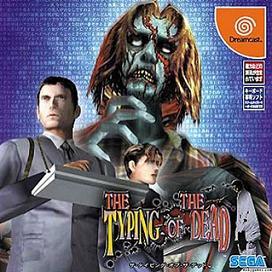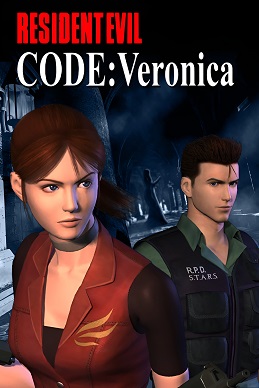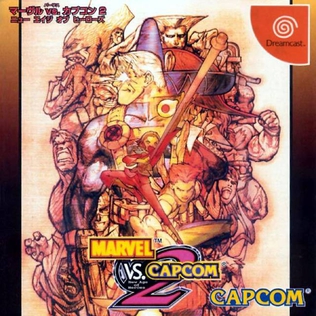
Marvel vs. Capcom is a series of crossover fighting games developed and published by Capcom, featuring characters from their own video game franchises and comic book series published by Marvel Comics. The series originated as coin-operated arcade games, though later releases would be specifically developed for home consoles, handhelds, and personal computers.
In the history of video games, the sixth generation era is the era of computer and video games, video game consoles, and handheld gaming devices available at the turn of the 21st century, starting on November 27, 1998. Platforms in the sixth generation include consoles from four companies: the Sega Dreamcast (DC), Sony PlayStation 2 (PS2), Nintendo GameCube (GC), and Microsoft Xbox. This era began on November 27, 1998, with the Japanese release of the Dreamcast, which was joined by the PlayStation 2 on March 4, 2000, the GameCube on September 14, 2001 and the Xbox on November 15, 2001, respectively. On March 31, 2001, the Dreamcast was among the first to be discontinued. Xbox in 2006, GameCube in 2007 and PlayStation 2 was the last, in January 2013. Meanwhile, the seventh generation of consoles started on November 22, 2005, with the launch of the Xbox 360.

The Typing of the Dead is an arcade game that was developed by WOW Entertainment and published by Sega for the NAOMI hardware. The game was released in Japanese arcades in 1999 and was ported to the Sega Dreamcast in 2001 by Smilebit. A Microsoft Windows version was released in 2000 and a PlayStation 2 port followed in 2004.

Street Fighter Alpha 3, released as Street Fighter Zero 3 in Japan, Asia, South America, and Oceania, is a 2D fighting game originally released by Capcom for the arcade in 1998. It is the third and final installment in the Street Fighter Alpha sub-series, which serves as a sequel to Street Fighter Alpha 2, and ran on the same CP System II hardware as previous Alpha games. The game was produced after the Street Fighter III sub-series has started, being released after 2nd Impact, but before 3rd Strike. Alpha 3 further expanded the playable fighter roster from Street Fighter Alpha 2 and added new features such as selectable fighting styles called "isms".

Death Crimson OX is a light gun shooting game developed by Ecole Software. It was released in arcades in 2000 then ported to the Dreamcast console in 2001, several months after Sega had dropped support for the console. It is the third and final game in the Death Crimson series, and the only one to be released outside Japan. The game was also released as Guncom 2 in Europe and Death Crimson OX+ in Japan on the PlayStation 2.
2001 saw many sequels and prequels in video games, such as Madden NFL 2002, NBA Live 2002, NBA 2K2, WWF Smackdown! Just Bring It, Capcom vs. SNK 2,Dead or Alive 3, Final Fantasy X, Gran Turismo 3: A-Spec, Grand Theft Auto III, Metal Gear Solid 2: Sons of Liberty, Myst III: Exile, Crazy Taxi 2, SSX Tricky, Super Smash Bros. Melee, Sonic Adventure 2, Tony Hawk's Pro Skater 3, and Virtua Fighter 4. New intellectual properties include Ace Attorney, Advance Wars,Animal Crossing, Burnout, Gothic, Black & White, Devil May Cry, Fatal Frame, Ghost Recon,Halo, Jak and Daxter, Max Payne, Oni, Onimusha: Warlords, Operation Flashpoint, Pikmin, Pro Evolution Soccer, Red Faction, Serious Sam, and Tropico.
The year 2000 saw the release of numerous video games as well as the launch of the PlayStation 2. Critically acclaimed games originally released in 2000 include sequels such as Madden NFL 2001, NBA Live 2001, NBA 2K1, WWF SmackDown! 2: Know Your Role, Baldur's Gate II, Diablo II, Dragon Quest VII, Final Fantasy IX, Metal Gear: Ghost Babel, NFL 2K1, Resident Evil – Code: Veronica, Spyro: Year of the Dragon, The Legend of Zelda: Majora's Mask, and Tony Hawk's Pro Skater 2, along with new intellectual properties such as Deus Ex, Jet Set Radio, Perfect Dark, Skies of Arcadia, The Sims, SSX, Vagrant Story, and Sin and Punishment. The year's best-selling home video games worldwide were Pokémon games for the third year in a row, while the highest-grossing arcade game in Japan was Virtua Striker 2.

Virtua Tennis 2, known as Tennis 2K2 in North America and Power Smash 2 in Japan, is a sequel to Virtua Tennis that was released for the Sega Dreamcast, Sega NAOMI arcade unit and Sony's PlayStation 2 in 2001–2002. New features included the ability to slice and play as female players such as Monica Seles, Serena Williams, Venus Williams and Lindsay Davenport and the males such as Patrick Rafter, Magnus Norman, Thomas Enqvist and Carlos Moyá and mixed doubles matches. The game was created and produced by Hitmaker, with Acclaim Entertainment publishing it in Europe for the PS2. This was the last Virtua Tennis game to be released for the Dreamcast following its discontinuation.

Capcom vs. SNK 2: Mark of the Millennium 2001 is the sequel to the fighting game Capcom vs. SNK. It was originally released on NAOMI hardware in arcades, with Sega handling the American arcade release. As in the original, players select a team of fighters from various Capcom and SNK games then fight other teams, winning each battle by defeating all the opponents from the other team.

Resident Evil – Code: Veronica is a survival horror video game developed and published by Capcom and originally released for the Dreamcast in 2000. It is the fourth main installment in the Resident Evil series and the first to debut on a separate platform from the PlayStation. The story takes place three months after the events of Resident Evil 2 (1998) and the concurrent destruction of Raccoon City as seen in Resident Evil 3: Nemesis (1999). It follows Claire Redfield and her brother Chris Redfield in their efforts to survive a viral outbreak at a remote prison island in the Southern Ocean and a research facility in Antarctica. The game retains the traditional survival horror controls and gameplay of previous installments; however, unlike the pre-rendered backgrounds of previous games, Code: Veronica uses real-time 3D environments and dynamic camera movement.

F355 Challenge is a racing simulation arcade video game based on the race car and Ferrari event. It was developed by the AM2 division of Sega for the Sega Naomi Multiboard arcade system board under the direction of Yu Suzuki, and was later ported to the Dreamcast and PlayStation 2 home video game consoles under the names F355 Challenge: Passione Rossa and Ferrari F355 Challenge respectively for both American and European releases. The only model of car featured in the game is the Ferrari F355 Challenge model. The game was considered the most accurate simulation of the F355 possible up until that time.

Gunbird 2 is a 2D scrolling shooter developed by Psikyo and published by Capcom as a sequel to the original Gunbird. It was originally released in Japanese arcades in 1998, and was later ported to the Dreamcast in 2000 and released worldwide. An Android version was released in Korea in 2014, before it came out worldwide on both Android and iOS in 2016. The arcade game was also included in Gunbird Special Edition for the PlayStation 2. A version was released on Nintendo Switch in June 2018, Microsoft Windows in June 2020, and PlayStation 4 and Xbox One in August 2022.

Cannon Spike, originally released in Japan as Gunspike, is a multi-directional shooter arcade game released in 2000 by Psikyo and later in the same year for the Dreamcast by Capcom. It uses Capcom-designed characters and runs on Sega's Naomi Hardware. Cannon Spike is similar to games like Smash TV and Capcom's Commando, although with primary focus on boss fighting. Cannon Spike is noted as the last game released for Dreamcast in Europe, published by Bigben Interactive and exclusively sold at retail in Game outlets.

Marvel vs. Capcom: Clash of Super Heroes is a crossover fighting game developed and published by Capcom. It is the third installment in the Marvel vs. Capcom series, which features characters from Capcom's video game franchises and characters from Marvel Comics. The game debuted in Japanese and North American arcades in 1998. It was ported to the Dreamcast in 1999 and the PlayStation in 2000. The game was re-released in 2012 for the PlayStation 3 and Xbox 360 as part of the Marvel vs. Capcom Origins collection.

Marvel vs. Capcom 2: New Age of Heroes is a crossover fighting game developed and published by Capcom. It is the fourth installment in the Marvel vs. Capcom series, which features characters from both Capcom's video game franchises and comic book series published by Marvel Comics. Originally released in Japanese arcades in 2000, the game received ports to the Dreamcast, PlayStation 2, PlayStation 3, Xbox, Xbox 360, and iOS devices over the span of twelve years.

Cyber Troopers Virtual-On Oratorio Tangram is a 1998 Japanese Sega Model 3 arcade action game that was later ported to the Sega NAOMI arcades and the Dreamcast home console in Japan in 1999 and North America in 2000. Oratorio Tangram is a 3D fighting game where the player assumes control of a giant humanoid robot, and is a sequel to the 1996 video game Virtual On: Cyber Troopers. A re-release of the game, entitled Virtual-On Oratorio Tangram Ver.5.66, was released worldwide for Xbox 360 on April 29, 2009.

Giga Wing 2 is a 2000 vertical scrolling shooter arcade game developed by Takumi and published by Capcom on Sega's NAOMI arcade system board and later ported in 2001 to the Dreamcast console. The arcade version is notable both for its excessive scores, and for using a horizontally aligned monitor, something that is considered rare for a vertical shooter.

Capcom vs. SNK: Millennium Fight 2000, also known as simply Capcom vs. SNK in international releases, is a 2000 head-to-head fighting game produced by Capcom originally released as a coin-operated arcade game for Sega's NAOMI hardware and later ported to the Dreamcast. It is the second game in the SNK vs. Capcom series and the first game in the series to be released for the arcade.

Spawn: In the Demon's Hand is a 3D fighting game developed and published by Capcom for the Dreamcast and arcade. It is based on the comic book character Spawn created by Todd McFarlane and produced by Image Comics. A port was planned for the PlayStation 2 as a launch title but was later canceled.















